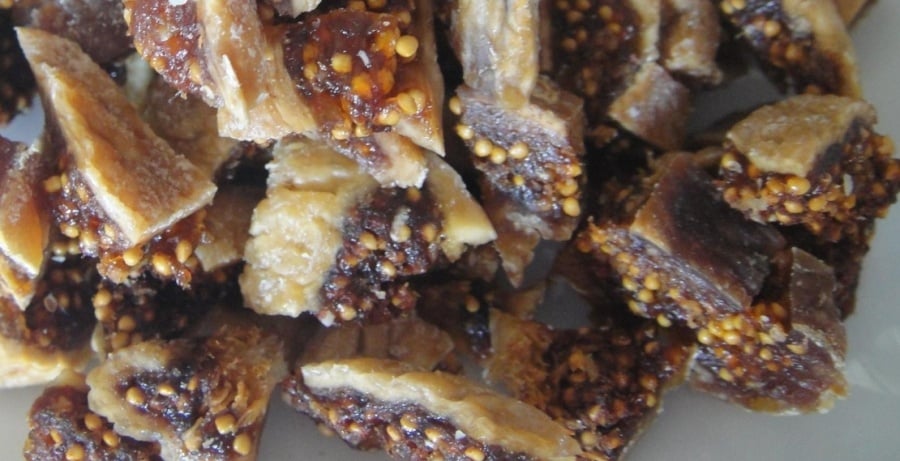
This is an ancient cracker recipe from Athenaeus, a rhetorician and grammarian who lived in Rome in the 3rd century AD. This recipe is a delightful, snacky...

This is, without a doubt, one of the easiest recipes you could ever try your hand at making. These cakes are still made in Egypt and Turkey, and have been around since early Greek and Roman times. You can find similar fig cakes sold at cheese shops and Whole Foods for ridiculously astronomical prices for what they are.
A 10th century encyclopedia, the Suda Lexicon, chronicles the ancient recipe as:
Palathai are cakes made of figs. And cakes of palasiai, that is of dried figs that have been squashed.
Palathai (fig cake)
Remove any fig stalks and use a food processor (or blender) on the figs and honey until it forms a sticky paste. Take the paste in your hands and form a dense, round, flattened cake. Mix together the flour and coriander and dust the outside of the cake with the mixture. Cut into small wedges.
Leftovers wrapped in plastic will keep for a week.

This is an ancient cracker recipe from Athenaeus, a rhetorician and grammarian who lived in Rome in the 3rd century AD. This recipe is a delightful, snacky...

Back in 1987, archaeologists discovered a treasure trove in a floor drain of the Roman Forum. This "treasure" was 86 loose teeth, all intact but with cavities in various...